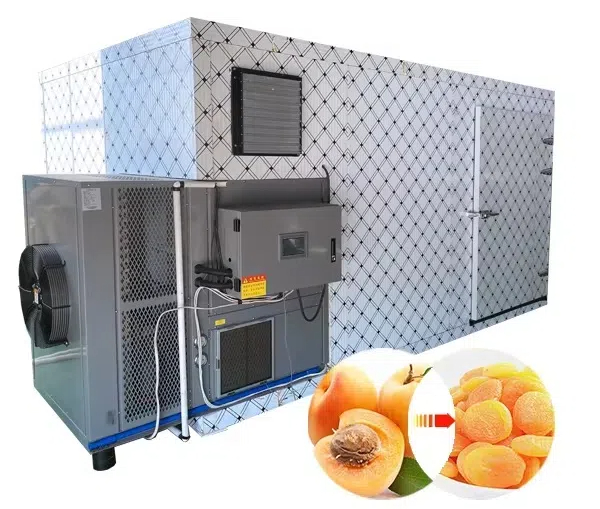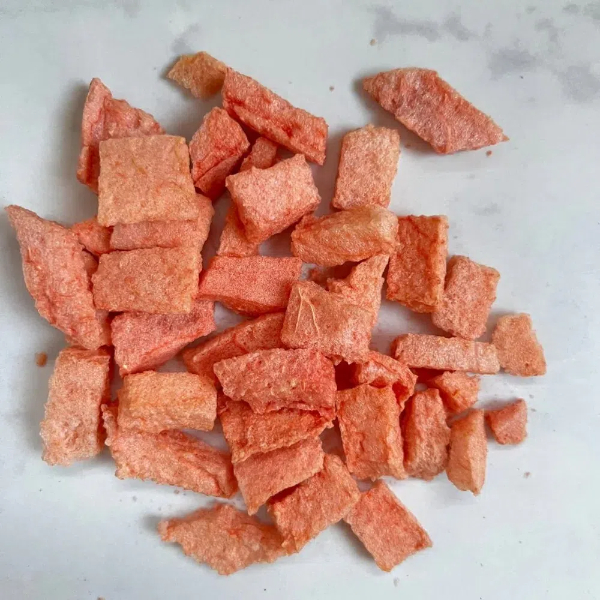
Content Menu
● Introduction to Room Type Drying Machines
>> Features of Room Type Drying Machines
● Benefits of Room Type Drying Machines
>> Quality Control
>> Efficiency and Cost Savings
>> Versatility
● Applications of Room Type Drying Machines
● Smart Drying Technologies
>> Smart Drying with AI
● Case Studies: Successful Implementation of Room Type Drying Machines
>> Example 1: Fruit Drying
>> Example 2: Meat Processing
● Maintenance and Upkeep of Room Type Drying Machines
>> Tips for Effective Maintenance:
● Future Developments in Room Type Drying Machines
>> Integration with Renewable Energy
>> Enhanced Monitoring Systems
● Future Trends in Drying Technology
● Conclusion
● FAQ
>> 1. What are the primary benefits of using room type drying machines in food processing?
>> 2. How do room type drying machines enhance quality control in the food industry?
>> 3. What types of food products can be dried using room type drying machines?
>> 4. How does smart drying technology improve the efficiency of room type drying machines?
>> 5. What are the environmental benefits of using advanced room type drying machines?
● Citations:
In the realm of food processing, maintaining high-quality standards is paramount. One crucial aspect of achieving this is through the use of advanced drying technologies, particularly room type drying machines. These machines play a pivotal role in ensuring consistent product quality by controlling moisture levels, preserving nutritional value, and enhancing shelf life. This article delves into the significance of room type drying machines in the food industry, highlighting their features, benefits, and applications.

Introduction to Room Type Drying Machines
Room type drying machines are designed to provide a controlled environment for drying food products. Unlike traditional drying methods, these machines offer precise control over temperature, humidity, and airflow, ensuring that food is dried uniformly and efficiently. This precision is critical for maintaining the quality and nutritional integrity of the final product.
Features of Room Type Drying Machines
1. Precise Temperature Control: These machines allow for adjustable temperature settings, which is essential for different types of food products. For example, fruits and vegetables require lower temperatures to preserve their nutrients, while meats may require higher temperatures for safety and texture.
2. Humidity Control: Maintaining optimal humidity levels prevents over-drying or under-drying, which can affect the texture and shelf life of the product.
3. Airflow Management: Uniform airflow ensures that all products are exposed to consistent drying conditions, reducing the risk of hotspots and uneven drying.
4. Monitoring Systems: Many modern room type drying machines come equipped with advanced monitoring systems that track moisture levels, temperature, and other critical parameters in real-time. This allows for immediate adjustments to ensure optimal drying conditions.
Benefits of Room Type Drying Machines
Quality Control
- Consistency: These machines ensure that every batch of dried food meets the same quality standards, which is crucial for maintaining customer satisfaction and brand reputation.
- Nutritional Preservation: By controlling drying conditions, room type drying machines help preserve the nutritional value of food products, making them healthier for consumers.
Efficiency and Cost Savings
- Energy Efficiency: Advanced drying technologies often consume less energy compared to traditional methods, reducing operational costs and environmental impact.
- Reduced Waste: Precise control over drying conditions minimizes the risk of over-drying or under-drying, which can lead to product waste.
Versatility
- Multi-Product Capability: Room type drying machines can be used for a wide range of food products, from fruits and vegetables to meats and grains.
Applications of Room Type Drying Machines
These machines are widely used in various sectors of the food industry:
1. Fruits and Vegetables: For drying fruits like apricots, apples, and berries, as well as vegetables such as carrots and sweet potatoes.
2. Meat and Fish: Used for drying meats like beef jerky and fish products to enhance shelf life and flavor.
3. Grains and Legumes: Essential for drying grains and legumes to preserve them for longer periods.
Smart Drying Technologies
The integration of smart drying technologies, such as AI and real-time monitoring systems, further enhances the efficiency and quality control capabilities of room type drying machines. These technologies allow for adaptive adjustments during the drying process, ensuring that products are dried to the optimal moisture level without compromising quality.
Smart Drying with AI
AI-powered systems can analyze real-time data from sensors to predict and adjust drying conditions, optimizing the process for different types of food products. This not only improves product quality but also reduces energy consumption and waste.

Case Studies: Successful Implementation of Room Type Drying Machines
Several companies have successfully integrated room type drying machines into their production lines, achieving significant improvements in product quality and efficiency.
Example 1: Fruit Drying
A leading fruit drying company in Europe implemented room type drying machines to improve the quality of their dried fruit products. By controlling temperature and humidity precisely, they were able to reduce moisture content to optimal levels, enhancing the shelf life and texture of their products.
Example 2: Meat Processing
A meat processing plant in the United States used room type drying machines to produce high-quality beef jerky. The machines allowed for precise control over drying conditions, ensuring consistent flavor and texture across all batches.
Maintenance and Upkeep of Room Type Drying Machines
To ensure optimal performance and longevity of room type drying machines, regular maintenance is crucial. This includes cleaning the machines after each use, checking for any wear and tear, and calibrating temperature and humidity sensors regularly.
Tips for Effective Maintenance:
- Regular Cleaning: Prevents the buildup of residue and bacteria, which can affect product quality.
- Scheduled Inspections: Identify and address any issues before they become major problems.
- Training Staff: Ensure that operators are well-trained in using and maintaining the machines.
Future Developments in Room Type Drying Machines
As technology continues to evolve, we can expect further innovations in room type drying machines. Advances in automation, IoT integration, and sustainable energy sources will make these machines even more efficient and environmentally friendly.
Integration with Renewable Energy
The integration of renewable energy sources, such as solar or wind power, can significantly reduce the carbon footprint of food drying operations. This not only benefits the environment but also helps companies comply with increasingly stringent environmental regulations.
Enhanced Monitoring Systems
Future machines will likely feature more sophisticated monitoring systems that can detect even slight variations in drying conditions. This will enable real-time adjustments to ensure that products are always dried to the optimal level.
Future Trends in Drying Technology
The future of drying technology is promising, with advancements in automation and sustainability expected to play a significant role. Companies are increasingly looking towards integrating renewable energy sources and advanced automation systems into their drying processes. This not only enhances efficiency but also aligns with global efforts to reduce carbon emissions and promote sustainable practices.
Conclusion
Room type drying machines are indispensable in the food industry for ensuring consistent product quality, efficiency, and cost-effectiveness. With their ability to control drying conditions precisely, these machines play a critical role in preserving nutritional value and enhancing shelf life. As technology continues to evolve, integrating smart drying technologies will further optimize the drying process, making room type drying machines even more essential for food manufacturers.

FAQ
1. What are the primary benefits of using room type drying machines in food processing?
The primary benefits include consistent product quality, preservation of nutritional value, energy efficiency, and reduced waste. These machines ensure that food products are dried uniformly, maintaining their texture and flavor while minimizing the risk of spoilage.
2. How do room type drying machines enhance quality control in the food industry?
Room type drying machines enhance quality control by providing precise control over temperature, humidity, and airflow. This ensures that every batch of dried food meets consistent quality standards, which is crucial for maintaining customer satisfaction and brand reputation.
3. What types of food products can be dried using room type drying machines?
These machines can be used for a wide range of food products, including fruits, vegetables, meats, fish, grains, and legumes. Their versatility makes them indispensable in various sectors of the food industry.
4. How does smart drying technology improve the efficiency of room type drying machines?
Smart drying technologies, such as AI and real-time monitoring systems, allow for adaptive adjustments during the drying process. This optimizes the drying conditions for different types of food products, improving product quality while reducing energy consumption and waste.
5. What are the environmental benefits of using advanced room type drying machines?
Advanced room type drying machines offer several environmental benefits, including reduced energy consumption and lower greenhouse gas emissions. By optimizing drying conditions, these machines minimize waste and reduce the need for reprocessing, contributing to a more sustainable food production process.
Citations:
[1] https://www.italianfoodtech.com/drying-innovation-in-pre-treatment-and-process-control/
[2] https://macinstruments.com/blog/optimizing-food-quality-role-moisture-analyzers-food-processing/
[3] https://www.jimdry.com/a-drying-equipment-enhancing-food-processing-with-advanced-dryers.html
[4] https://www.alamy.com/stock-photo/drying-machine.html
[5] https://www.ike.cn/video.html
[6] https://www.youtube.com/watch?v=qtC36z0HleQ
[7] https://aces.illinois.edu/news/smart-food-drying-techniques-ai-enhance-product-quality-and-efficiency
[8] https://www.istockphoto.com/photos/food-dryer
[9] https://www.youtube.com/watch?v=A5Nf2P7-nbU
[10] https://www.youtube.com/watch?v=9DSGcVhjHEc
[11] https://www.youtube.com/watch?v=rR2G5UO-5Ms
[12] https://www.youtube.com/watch?v=l81gCTvoUjg
[13] https://www.rmoni.com/blog/food-quality-control-system-benefits
[14] https://earthwormexpress.com/wp-content/uploads/2021/06/Quality-Changes-in-Food-Materials-as-Influenced-by-Drying-Processes.pdf
[15] https://www.rxpelletmachine.com/info/top-10-advantages-of-commercial-fruit-dryer-ma-92702632.html
[16] https://www.customprocessingservices.com/blog/advantages-of-flash-drying-in-food-processing











